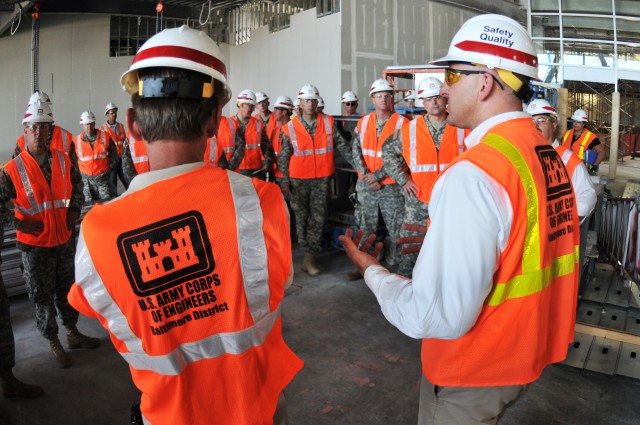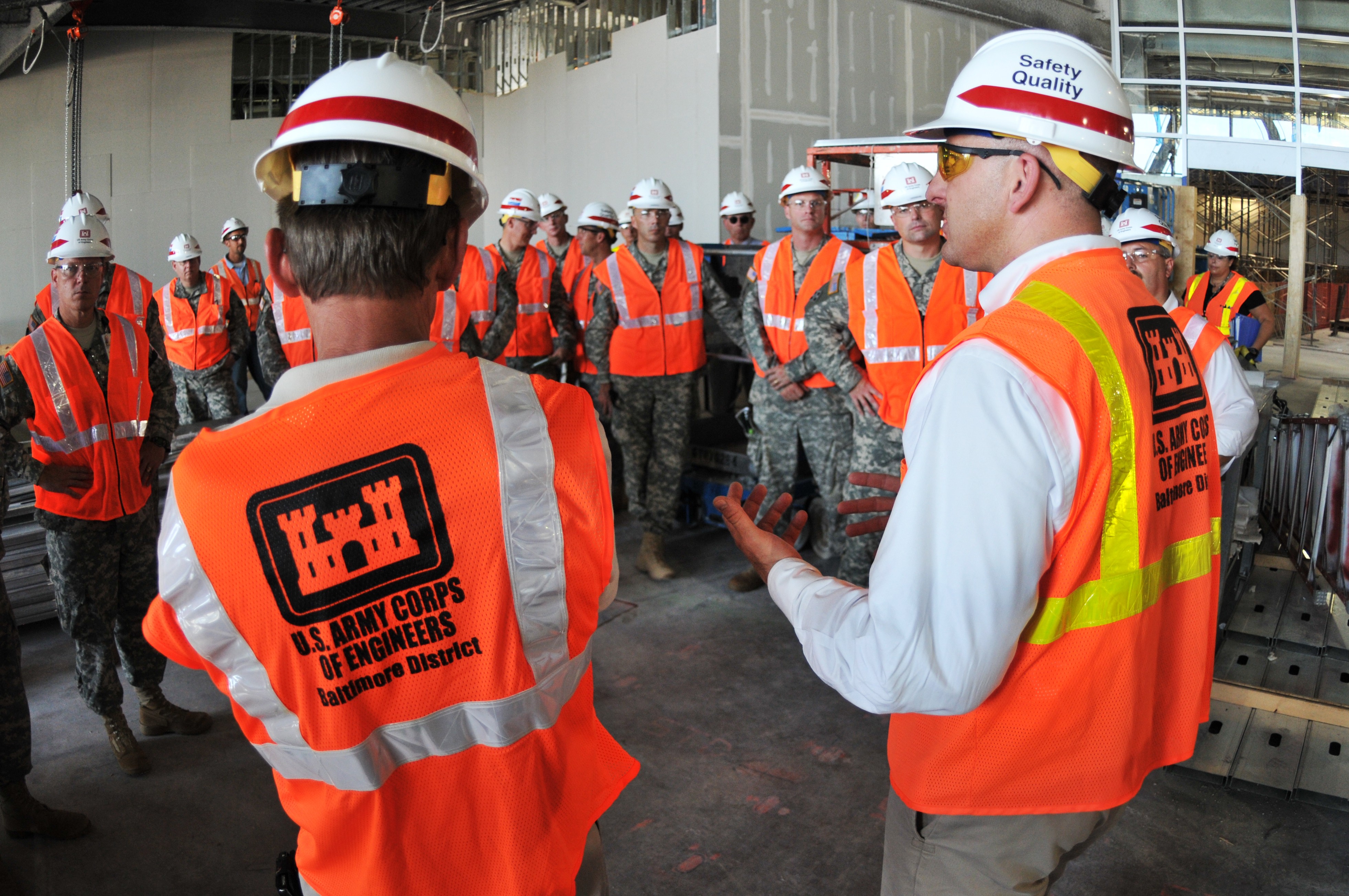
BROOKLYN, N.Y., May 11, 2011 -- When any employer receives more work than the workforce can handle, the standard response is to hire more employees. But what happens when the workload decreases'
Such was the challenge the U.S. Army Corps of Engineers North Atlantic Division, or NAD, faced when confronted with the recommendations of the Base Realignment and Closure 2005 commission. Because many of the recommendations consolidated forces in the Northeast, the impact more than doubled the division's military construction average and resulted in the largest MILCON program in the Army Corps of Engineers since World War II.
And yet, at NAD, the workforce didn't double.
"We did plus up a little, but the bottom line was that we had extraordinarily talented and devoted individuals who had the experience and the drive to shoulder the brunt of the work themselves," said Brig. Gen. Peter "Duke" DeLuca, NAD commanding general. "We also enacted a regional approach that allowed all of our districts to participate in accomplishing this large and very time-critical workload."
The challenge now, said Dawn Clappsy, human resources director for the division, is to ensure the people who were hired for BRAC work have appropriate transition assistance.
"We were very deliberate in bringing people on board for BRAC," said Clappsy. "Out of 3,500 or so employees who work in our division, 136 will be impacted when BRAC ends. And we have been dialoging with them and their local commanders and HR (Human Resources) reps to ensure there's a suitable placement process to help them transition to a job within the region, (or) even in Europe ..."
The goal is to place impacted personnel into vacant positions. As of February 2011, impacted personnel have first dibs when vacancies that match their title, series, and grade (or a lower grade) are announced in their districts. If there is no local interest, the announcement goes out for non-competitive selection to any impacted employee in the region that meets the criteria.
Although the process is not being used for promotions, impacted employees are free to compete for promotions. In addition, each district has a staffing plan for anticipated openings to assist in placing employees.
"Rather than just waiting around for an announcement to pop open, I talked to my supervisor and he sent out an email to the area offices saying he's got a guy looking to relocate," said Andre Alleyne, an impacted Baltimore District employee who moved from the Fort Belvoir,Va., area office to the Aberdeen Proving Ground, Md., area office, both within the Baltimore District. "It really falls on having good communication with your supervisor to help you move when you can."
So far, about 30 percent of announcements have been filled by impacted employees, who numbered about 150 when the program began in February. Relocation costs may be paid for employees who select jobs outside the commuting area.
"We're still early on in the program. But we've seen some success so far," said Clappsy. "And, frankly, BRAC projects are still going on, so people may be less likely to leave before they see the project that they've been working on for the last five years completed."
Of the 136 employees, 46 need to be placed by Sept. 30, 2011, the end of the federal government's fiscal year. The rest have until Sept. 30, 2012 to choose a different job.
"For most, there's time. But it's not a lot of time," said Clappsy. "Many people may be waiting for the right announcement in their home district. And there's no problem in making that a priority. But if everyone is thinking that, then people may wait so long their deadlines will pass. So there's a potential benefit to jumping early."
Many other HR tools may be used for transition assistance, including management directed reassignments, and referral to the priority placement program, reemployment priority list, inter-agency career transition assistance plan and both local and outreach placement options. Voluntary separation incentive payment, voluntary early retirement authority, and discontinued service retirement may also be used.
Once deadlines pass, reduction in force actions may occur for employees who have not taken advantage of the numerous options available to them.
"We know this is difficult for many employees. But we're doing everything the government allows us to do to make this easier," said DeLuca. "If a job opens up and you're qualified for it, I recommend you contact your Supervisor or HR and figure out if it's a good fit, even if it's in a different area."
DeLuca expressed confidence in placing all 136 employees.
"These are expeditionary-type employees who took a chance at managing massive and demanding BRAC projects," said DeLuca. "These are the exact type of people we need to take a chance at another job in potentially another district."
Funding for the Army BRAC 2005 program was three times larger than the four previous BRAC rounds combined, and much of that was focused on installations in the Northeast.
Related Links:
STAND-TO!: Completing a Successful BRAC; Collaborating with Best Practices

Social Sharing